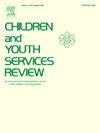Family economic hardship and adolescents’ bullying perpetration/victimization in online and offline context: A latent profile analysis
IF 1.7
2区 社会学
Q1 FAMILY STUDIES
引用次数: 0
Abstract
Family economic hardship is a significant risk factor for adolescent development. However, few studies examine its impacts on both bullying perpetration and victimization across online and offline contexts, and previous studies often overlook the overlap between different patterns of bullying involvement. This study aims to assess the impact of family economic hardship on traditional bullying perpetration, traditional victimization, cyberbullying perpetration and cybervictimization among Chinese adolescents, explore the mediating factors, analyze gender and grade differences, and identify distinct bullying involvement profiles. This study used a cross-sectional design, and the sample comprised 13,873 adolescents (49.85% male) from senior and junior high schools in Zhejiang Province, China. This study employed a multi-faceted analytical approach, including primary analyses, mediation analysis, heterogeneity analysis, latent profile analysis and the multinomial logistic regression. The findings indicate that family economic hardship is associated with increased bullying involvement, mediated by family affective response and relative deprivation, with a more pronounced effect on victimization and offline contexts. Latent profile analysis delineates five distinct groups (low-risk 85.07%, medium-risk 5.61%, high-risk 3.81%, high online-risk 3.64%, high offline-risk 1.92%), with family economic hardship predicting membership in high-risk groups. A positive family environment and reduced relative deprivation lower the likelihood of being in low-risk groups, while male gender and senior-high school status are associated with higher-risk group membership. The study integrates the findings into a comprehensive model, offering insights for interventions and policy development.
家庭经济困难与网络和线下情境下青少年欺凌行为的潜在特征分析
家庭经济困难是青少年发展的一个重要风险因素。然而,很少有研究考察其对在线和离线情境下欺凌实施和受害的影响,并且以往的研究往往忽略了不同模式的欺凌参与之间的重叠。本研究旨在评估家庭经济困难对中国青少年传统欺凌行为、传统欺凌行为、网络欺凌行为和网络欺凌行为的影响,探讨其中介因素,分析性别和年级差异,并发现不同的欺凌卷入特征。本研究采用横断面设计,样本包括中国浙江省高中和初中的13873名青少年,其中男性49.85%。本研究采用了多方面的分析方法,包括初步分析、中介分析、异质性分析、潜在剖面分析和多项逻辑回归。研究结果表明,家庭经济困难与欺凌参与的增加有关,由家庭情感反应和相对剥夺介导,对受害和离线情境的影响更为明显。潜在特征分析划分出5个不同的群体(低风险85.07%,中风险5.61%,高风险3.81%,高在线风险3.64%,高离线风险1.92%),家庭经济困难预测高危群体的成员资格。积极的家庭环境和较少的相对剥夺降低了进入低风险群体的可能性,而男性性别和高中学历与高风险群体成员相关。该研究将研究结果整合到一个综合模型中,为干预措施和政策制定提供了见解。
本文章由计算机程序翻译,如有差异,请以英文原文为准。
求助全文
约1分钟内获得全文
求助全文
来源期刊

Children and Youth Services Review
Multiple-
CiteScore
6.30
自引率
6.10%
发文量
303
期刊介绍:
Children and Youth Services Review is an interdisciplinary forum for critical scholarship regarding service programs for children and youth. The journal will publish full-length articles, current research and policy notes, and book reviews.
 求助内容:
求助内容: 应助结果提醒方式:
应助结果提醒方式:


